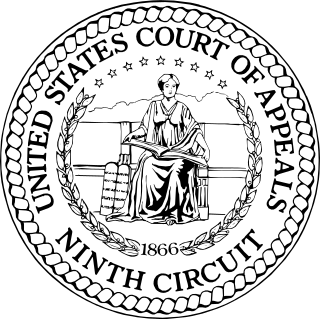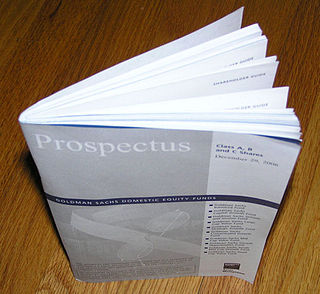A dividend tax is the tax imposed by a tax authority on dividends received by shareholders (stockholders) of a company.
Tax deduction is a reduction of income that is able to be taxed and is commonly a result of expenses, particularly those incurred to produce additional income. Tax deductions are a form of tax incentives, along with exemptions and credits. The difference between deductions, exemptions and credits is that deductions and exemptions both reduce taxable income, while credits reduce tax.
A capital gains tax (CGT) is a tax on capital gains, the profit realized on the sale of a non-inventory asset that was greater than the amount realized on the sale. The most common capital gains are realized from the sale of stocks, bonds, precious metals, and property. Not all countries implement a capital gains tax and most have different rates of taxation for individuals and corporations.
A corporate tax, also called corporation tax or company tax, is a direct tax imposed by a jurisdiction on the income or capital of corporations or analogous legal entities. Many countries impose such taxes at the national level, and a similar tax may be imposed at state or local levels. The taxes may also be referred to as income tax or capital tax. Partnerships are generally not taxed at the entity level. A country's corporate tax may apply to:

Income taxes in the United States are imposed by the federal, most state, and many local governments. The income taxes are determined by applying a tax rate, which may increase as income increases, to taxable income, which is the total income less allowable deductions. Income is broadly defined. Individuals and corporations are directly taxable, and estates and trusts may be taxable on undistributed income. Partnerships are not taxed, but their partners are taxed on their shares of partnership income. Residents and citizens are taxed on worldwide income, while nonresidents are taxed only on income within the jurisdiction. Several types of credits reduce tax, and some types of credits may exceed tax before credits. An alternative tax applies at the federal and some state levels.
Capital gains tax (CGT), in the context of the Australian taxation system, is a tax applied to the capital gain made on the disposal of any asset, with a number of specific exemptions, the most significant one being the family home. Rollover provisions apply to some disposals, one of the most significant of which are transfers to beneficiaries on death, so that the CGT is not a quasi estate tax.
Tax shelters are any method of reducing taxable income resulting in a reduction of the payments to tax collecting entities, including state and federal governments. The methodology can vary depending on local and international tax laws.

Cridland v Federal Commissioner of Taxation, was a 1977 High Court of Australia case concerning a novel tax scheme whereby some 5,000 university students became primary producers for tax purposes, allowing them certain income averaging benefits. The Australian Taxation Office held this was tax avoidance, but the test case was decided in favour of the taxpayer, one of the students, Brian Cridland.
Income taxes in Canada constitute the majority of the annual revenues of the Government of Canada, and of the governments of the Provinces of Canada. In the fiscal year ending 31 March 2018, the federal government collected just over three times more revenue from personal income taxes than it did from corporate income taxes.

Slutzkin v Federal Commissioner Of Taxation, was a High Court of Australia case concerning the tax position of company owners who sold to a dividend stripping operation. The Australian Taxation Office (ATO) claimed the proceeds should be treated as dividends, but the Court held they were a capital sum like an ordinary investment asset sale.
Federal Commissioner of Taxation v Peabody was a 1994 High Court of Australia tax case concerning certain transactions made by the Peabody family business. The Australian Taxation Office (ATO) sought to apply the Part IVA general anti-avoidance provisions of the Income Tax Assessment Act 1936.

Corporate tax is imposed in the United States at the federal, most state, and some local levels on the income of entities treated for tax purposes as corporations. Since January 1, 2018, the nominal federal corporate tax rate in the United States of America is a flat 21% due to the passage of the Tax Cuts and Jobs Act of 2017. State and local taxes and rules vary by jurisdiction, though many are based on federal concepts and definitions. Taxable income may differ from book income both as to timing of income and tax deductions and as to what is taxable. The corporate Alternative Minimum Tax was also eliminated by the 2017 reform, but some states have alternative taxes. Like individuals, corporations must file tax returns every year. They must make quarterly estimated tax payments. Groups of corporations controlled by the same owners may file a consolidated return.
Commissioner v. Banks, 543 U.S. 426 (2005), together with Commissioner v. Banaitis, was a case decided before the Supreme Court of the United States, dealing with the issue of whether the portion of a money judgment or settlement paid to a taxpayer's attorney under a contingent-fee agreement is income to the taxpayer for federal income tax purposes. The Supreme Court held when a taxpayer's recovery constitutes income, the taxpayer's income includes the portion of the recovery paid to the attorney as a contingent fee. Employment cases are an exception to this Supreme Court ruling because of the Civil Rights Tax Relief in the American Jobs Creation Act of 2004. The Civil Rights Tax Relief amended Internal Revenue Code § 62(a) to permit taxpayers to subtract attorney’s fees from gross income in arriving at adjusted gross income.
The dividends-received deduction, under U.S. federal income tax law, is a tax deduction received by a corporation on the dividends it receives from other corporations in which it has an ownership stake.

Pape v Commissioner of Taxation is an Australian court case concerning the constitutional validity of the Tax Bonus for Working Australians Act 2009 (Cth) which seeks to give one-off payments of up to $900 to Australian taxpayers. The decision of the High Court of Australia was announced on 3 April 2009, with reasons to follow later.

Wills v. Commissioner, 411 F.2d 537 was a United States taxation case decided by the United States Court of Appeals for the Ninth Circuit in 1969.
The Abgeltungsteuer is a flat tax on private income from capital. It is used in Germany, Austria, and Luxembourg.
Section 90 of the Constitution of Australia prohibits the States from imposing customs duties and of excise. The section bars the States from imposing any tax that would be considered to be of a customs or excise nature. While customs duties are easy to determine, the status of excise, as summarised in Ha v New South Wales, is that it consists of "taxes on the production, manufacture, sale or distribution of goods, whether of foreign or domestic origin." This effectively means that States are unable to impose sales taxes.

Commissioner of Taxation v La Rosa was a 2003 decision of the Federal Court of Australia, sitting as the Full Court of the Federal Court. The court upheld two earlier rulings that Frank La Rosa, a convicted heroin dealer, was entitled to a tax deduction of $220,000 for money stolen from him during a drug deal. As a result of the decision, the federal government amended the Income Tax Assessment Act 1997 to prevent similar deductions being made.











